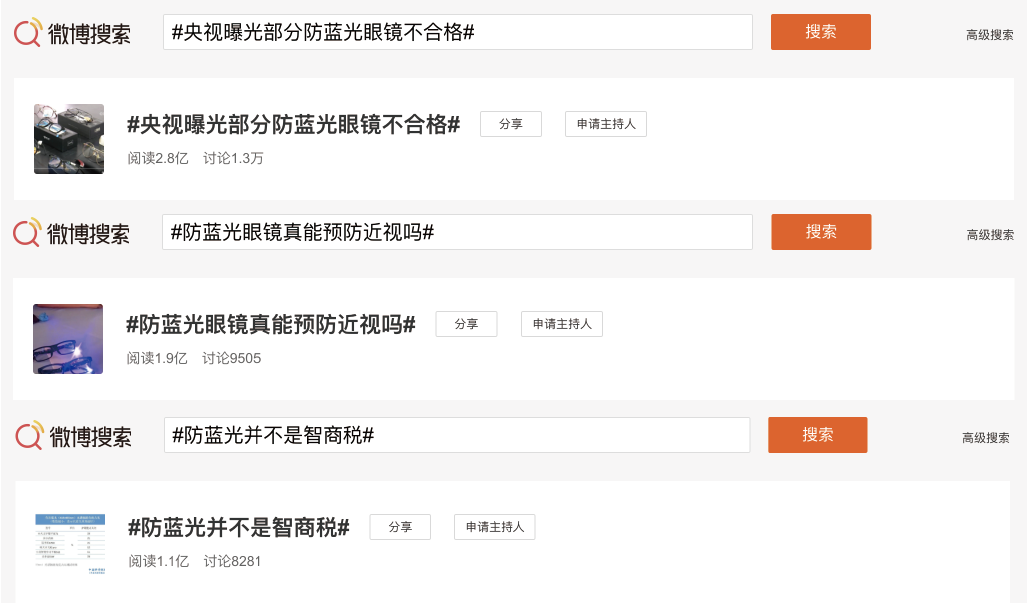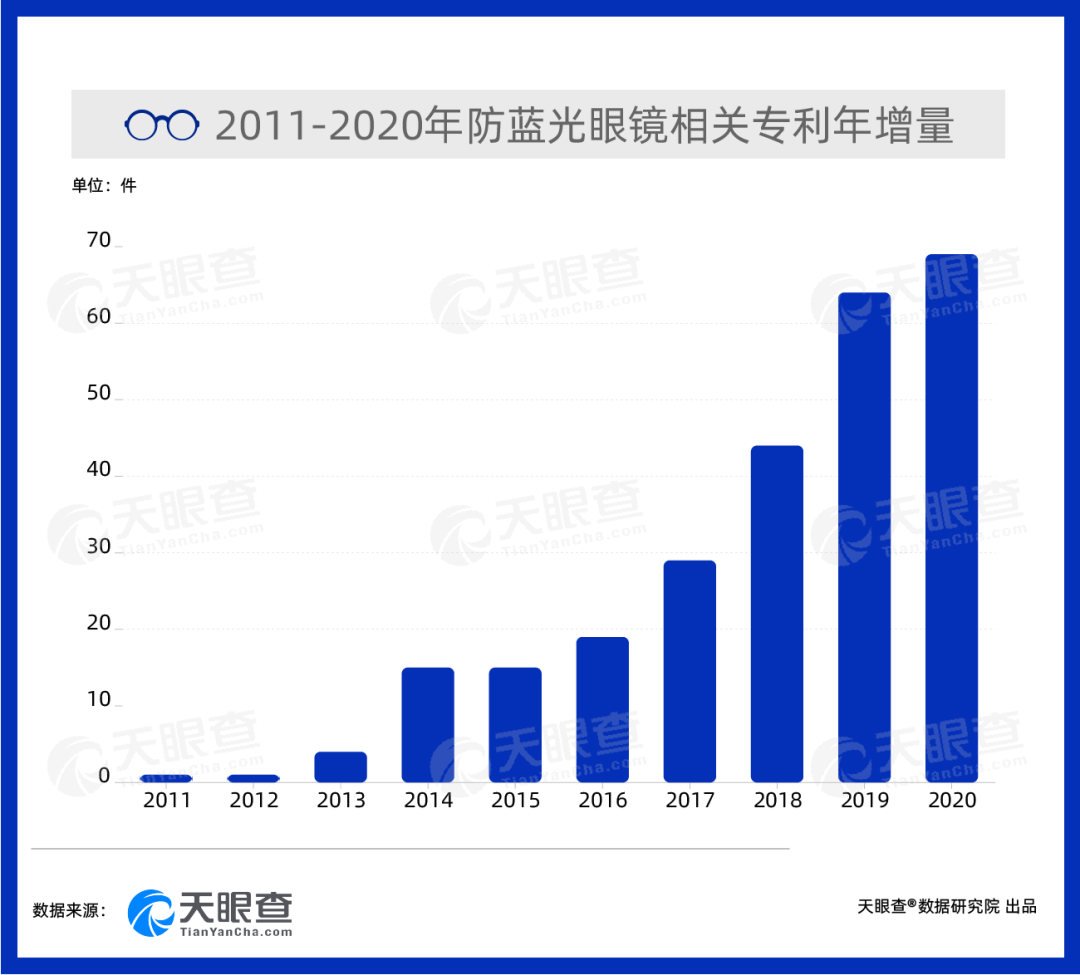Anti-blue light ≠ anti-myopia, eye protection still needs scientific rationality.
Before there is #CCTV Exposure Part Anti-Blu-ray Glasses Unqualified#, and later there is #Anti-blue glasses can really prevent myopia#, anti-blue light products never lack topics. A few days ago, #防 Blu-ray Is not智商税# rushed to the hot search, anti-blue light products once again aroused heated discussion.
In fact, anti-blue light is not meant to prevent “blue light”. Public information shows that blue light refers to visible light with a wavelength range of 400-500 nanometers, and most of the light sources such as LED lighting fixtures, mobile phones, and tablets are LED light sources excited by blue light.
But not all blue light is harmful to humans. Among them, due to the extremely low tolerance of human eyes to radiation, long-term exposure to short-wave blue light can cause irreversible damage to the eyes, but long-wave blue light radiation is essential for regulating the body’s circadian rhythm.
The People’s Daily mentioned in the report that invalid anti-blue glasses have two major problems: they do not protect the blue light in the vulnerable region of the human eye, or shield the beneficial blue light spectrum. At the same time, it is recommended to choose products that clearly state the technical standards.
This undoubtedly puts forward higher requirements on various anti-blue light products on the market from a technical perspective. According to the patent data of Tianyancha Professional Edition, according to incomplete statistics, more than 460 companies in my country have applied for anti-blue light related patents, the number of which is nearly 830.
Production and research are in parallel, and these companies have anti-blue light related patents
Tianyancha Professional Edition data shows that more than 75% of companies with anti-blue light related patents (hereinafter referred to as “anti-blue light related companies”) were established five years ago. In terms of geographical distribution, Guangdong Province has the largest number, with 170 companies, accounting for 37% of the country’s total. Jiangsu Province ranks second with 100 related companies, accounting for 22% of the country’s total.
In terms of industry, production and research are in parallel. More than half of anti-blue light-related companies are located in the manufacturing industry, while 29% and 17% of related companies are located in scientific research and technical services, as well as wholesale and retail. From the perspective of the distribution of secondary industries, anti-blue light-related companies are at most distributed in research and experimental development industries, accounting for 15%.
The emitting end blocks blue light, and the film patents account for nearly 60%
In recent years, digital products such as mobile phones and tablets have gradually become popular. The screen protectors of some electronic products have gradually added anti-blue light functions, which can block blue light from the blue light emitting end that may cause harm to the human body.
Tianyan Check Data Research Institute conducted a text analysis of the names and abstracts of anti-blue light related patents and found that the current anti-blue light related patents are mainly anti-blue light films, and “film” appears in the names or abstracts of nearly 500 related patents. Chinese characters, accounting for as high as 59.4%.
Specifically, most of the anti-blue light film related patents can be applied to various products, but some are dedicated to specific types of electronic products, such as mobile phones, computers, and TVs. Among them, anti-blue mobile phone film related patents accounted for the highest proportion, accounting for 10% of the total patents.
It is worth noting that in 2019, the Guangdong Provincial Consumer Council’s comparative test results showed that the eye protection modes of mobile phones and tablets, as well as some films with anti-blue light function, can play a certain anti-blue light effect. But the eye protection mode that comes with electronic products is more comprehensive and effective in anti-blue light.
The receiving end reflects blue light, and the number of patents related to anti-blue light glasses has surged in recent years
As we all know, myopia in children and adolescents is mainly caused by long-term use of electronic products, resulting in visual fatigue and improper use of posture. With the increase of online teaching, many parents of students choose to buy anti-blue glasses to protect their children’s health.
In this regard, the China Consumers Association stated that consumers should treat the anti-blue light products at high prices through false and exaggerated publicity on the performance of anti-blue light products, over-interpreting the harm of blue light.
Tianyan Check Data Research Institute conducted a statistical analysis of the names and abstracts of anti-blue light related patents and found that the number of related patents involving anti-blue light glasses was nearly 300, accounting for 34.1% of the total number of patents.
From the perspective of patent application time, since 2017, the number of patents related to blue light glasses has increased rapidly. Among them, more than 60 new anti-blue glasses related patents were added for two consecutive years from 2019 to 2020. Up to now, nearly 20 related patents have been added in 2021.
Anti-blue light≠anti-myopia, eye protection still needs scientific rationality
As mentioned above, not all blue light in all bands is harmful. Excessive protection of blue light will not only not protect eyesight, but may even aggravate visual fatigue. Many experts pointed out that there is not enough medical evidence to prove that products such as blue light glasses can play a significant role in preventing and controlling myopia.
On July 13, 2020, the China Consumers Association issued a consumer warning stating that children, adolescents and parents do not have to worry too much about the harm of blue light to the eyes, and do not blindly believe in the myopia protection effect declared in the advertisement of anti-blue light products. Choose the appropriate one. electronic product. At the same time, parents should pay more attention to their children’s eye hygiene, use eyes rationally, and protect eyesight.
Data description
1. Relevant patent definition method:
(1) Anti-blue light related patents: patents with “anti-blue light and anti-blue light” in the patent name or abstract;
(2) Anti-blue light film related patents: anti-blue light related patents with “film” in the patent name or abstract;
(3) Anti-blue light mobile phone/computer/TV film related patents: the patent name or abstract contains “mobile phone, computer, TV” related patents about blue light film;
(4) Anti-blue light glasses related patents: anti-blue light related patents with “glasses, lenses” in the patent name or abstract;
2. Only statistics of enterprises in mainland China; statistics are as of March 2021.



